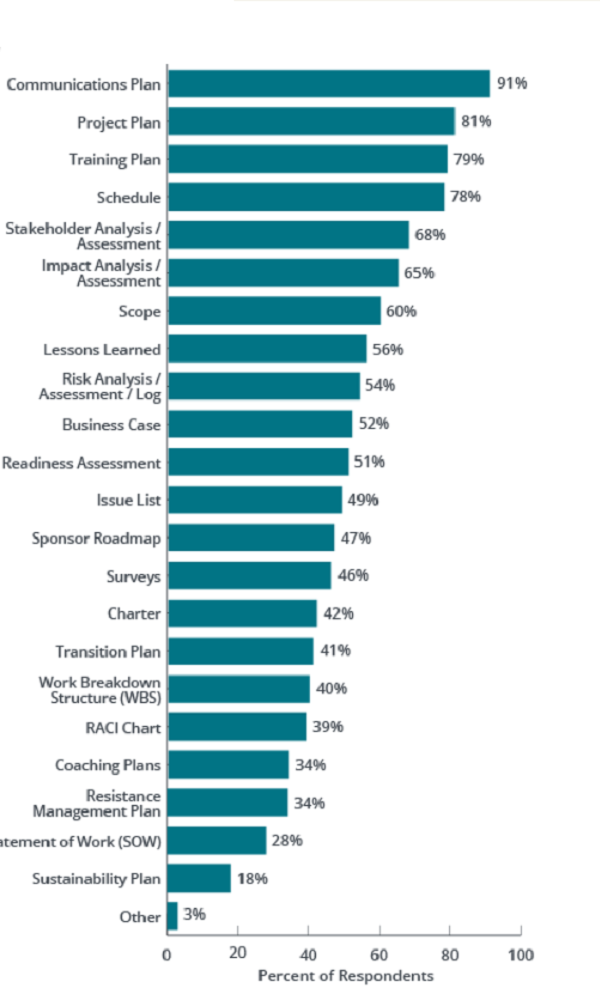(Successful Change Management -11 Elements Cont. 5)
9. Integrate change management with project management and improvement processes cont.)
Integrating project and change management tools (the 3 most frequently integrated were communication plans (91%), project plans (81%) and training plans (79%))

Prosci, 2023j)
Some actions for integrating tools
- identify specific tools that help integration (this includes communications plan, training plan, stakeholder analysis, impact analysis, risk assessment, lessons learned, etc)
- build on what has already been done ('don't try to reinvent the wheel'; be careful answering questions around 'why change, why now, what if we don't, how will I be impacted, what's in it for me, etc)
- ensure clear ownership (clarify at the start who is accountable for each integrated tool))
iv) methodologies (while integration of people, processes and tools is at the project level, methodological integration is at the organisational level; involves decisions about when and how the methodologies interact and diverge plus institutionalising change management.
Some actions for integrating methodologies
- select common change management methodology (one way to evaluate change methodology is to use Prosci's 3-phase process)

Another way to use the 7 ingredients (for more details, see elsewhere in the Knowledge Base)
Questions to help understand the 3 phases (Prosci)
a) prepare approach
"...i) What are we trying to achieve with this change?
ii) Who must do their jobs differently and how?
iii) Who are the sponsors and people managers we need to evolve to make this successful?..."
Prosci, 2023l
b) manage change (this involves developing a master plan with sub-plans for elements such as communications; implementing activities and tracking outcomes and performance; modifying as required; need to think about
"...What percentage of its benefits depend on people changing the way they work? Do you have the support in place to help them make this change?..."
Prosci, 2023l)
c) sustain outcomes (this involves reviewing and documenting activities and outcomes; identifying gaps and opportunities for improvement; paring key roles; transferring responsibility; celebrating success)
- be careful of trade-offs (need to ensure that the integrity of the methodologies are not compromised when integrated)
- manage change of introducing an integrated methodology (make sure the project management does not dominate the change management aspects)
v) results and outcomes (acknowledge that change management and project management are complimentary disciplines with a shared definition of success, ie results and outcomes, and how each discipline will contribute)
Some actions for integrating results and outcomes:
- define success in terms of both change management and project management (need to define success in terms of achieving results and outcomes, rather than simply executing activities, such as number of employees trained, etc)
- gain buy-in (sometimes employees are not aware of the value of the change and see it as an overhead that can slow down the project consume resources that could be used elsewhere; need to determine percentage of overall results and outcome that is dependent on the people-side, such as adoption and usage, ie people-dependent portion of ROI, etc.
